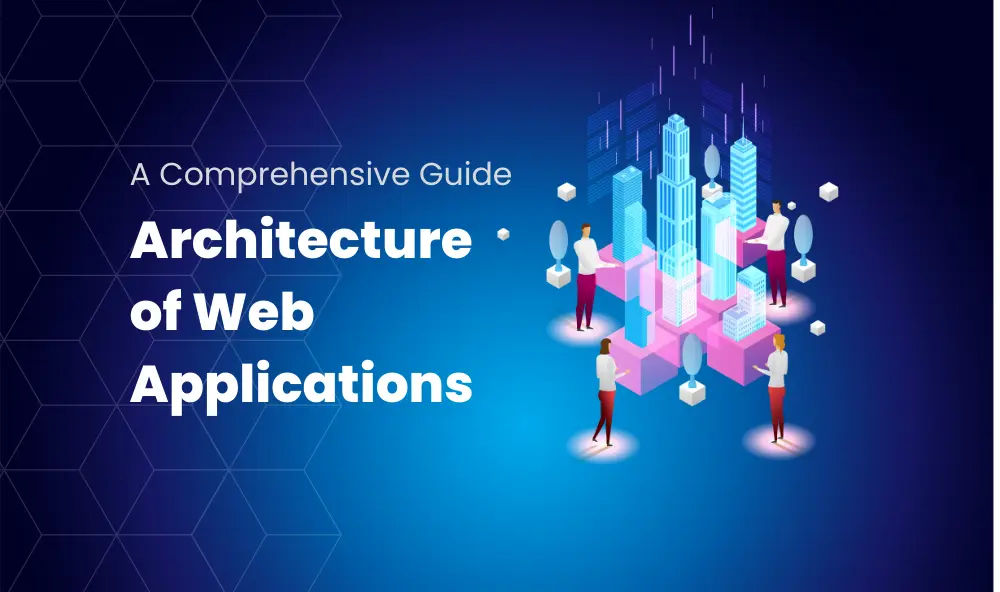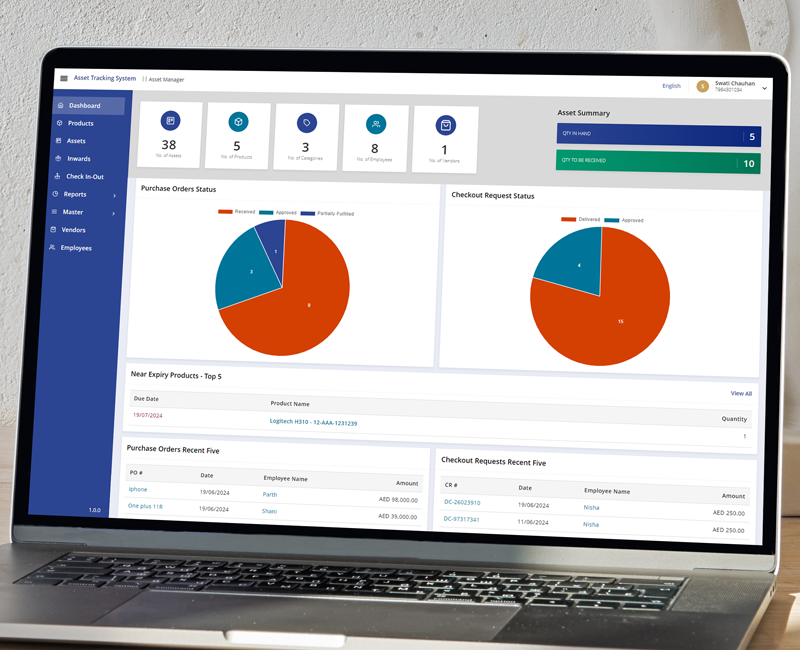Table of contents

Web applications are extremely popular today among both users and developers. The web application market is continually evolving, integrating new technologies and strengthening safety requirements.
Now, choosing the web architecture to use is the first and most crucial step developers must do when starting a new web application project. For the intended outcome, an effective, quality-driven web architecture has become crucial.
It serves as a model for information and data flow that can successfully address business issues. A design with thoughtful features and an easy-to-use interface guarantees a flawless user experience and lowers the risk of crashing to prevent downtime.
If you’re still unclear and want to learn more about information architecture, this article will give you a general overview of contemporary web application architecture.
It covers everything, including its critical elements, categories, and models, so you may spend with certainty in this form of architecture. Let’s get going!
What is web application architecture? Explained!
It is a framework made up of connections and interactions between each component of the program. It covers every element, such as databases, load balancers, web servers, database systems, middleware systems, and interface design.
The final web application’s parts, subcomponents, and external application exchanges are all included in the web application architecture. In essence, software developers created an application’s design to logically identify application components.
The reasoning is simple: when a user enters a certain URL in the browser and clicks “Go,” the browser sends a request to the server. It reacts quickly and displays the needed web page. Keep in mind that responses should be prompt. Users will quit your website if this is not the case.
How does the Web application architecture work?
The following are the two most crucial elements of the architecture for developing web apps:
Client-side: This section displays and accepts user interaction. Typically, it is written in HTML and Java and retained in the browser. It is widely recognized as a front-end platform.
Server-side: A backend framework is another name for it since HTTP is used for all background work. Typically, PHP, Python, and Ruby are used to write the code.
Let’s examine how web app architecture works
- An URL request is made whenever you perform a search.
- The browser then performs a search and delivers the query in accordance with the URL’s DNS.
- The request will be forwarded to the server by the DNS after it recognizes the IP address.
- The necessary data or information is subsequently received by the server and sent to the information storage.
- The web page is then located and shown on the browser’s screen.
4 Benefits of Web application architecture that you should know about!

Better user experience
From the perspective of the user experience, you must make an investment in web application software structure or a sound operating system.
It is crucial to the creation of any online application. In order to prevent downtime, it ensures that your design is effective and scalable, meaning it will function properly in a range of circumstances. If a business software contains too many issues, users will become irritated and unwilling to utilize it.
Seamless management
A well-thought-out web application architecture diagram can manage varying loads and effectively adapt to evolving business needs to give a quick customer experience that further increases application performance.
By breaking the framework up into several separate modules, you may also handle multiple development tasks at once, thus cutting down on web application development time. It also gets simpler to include new features without changing the general framework.
Robust security
Modern web app architecture secures each of a web application’s structural components separately by thinking of it as a system of several building pieces. By doing so, overall security is improved, enabling the software to withstand typical security risks like hostile attacks. Because of its sturdy construction, increasing the security level won’t jeopardize it.
Better business results
In the long run, the appropriate web application design can save your business time and money. It will guarantee that your website functions at its best and is error-free during its operation.
Web application system architecture even enables web designers to build websites that scale effectively as visitor numbers rise and offer a variety of additional capabilities that customers today are coming to anticipate.
Types of Web application architecture!

Single-page application architecture
In order to create an engaging user experience, modern web app architecture such as SPAs has been used. They can access every piece of data from a single HTML page. The application logic is moved from the server to the client, and the server is merely used for data storage, which speeds up the website.
When a user performs a new action, single-page web apps do not fetch entirely new pages from the server. Rather, these programs offer dynamic user interaction and up-to-date content on a single-page application architecture. This contributes to a seamless user experience.
It is advised that developers utilize AJAX, which obtains data from a server asynchronously and doesn’t alter the functionality or appearance of the existing page.
Microservices architecture
These are little, lightweight solutions that carry out just one function. With the help of the Microservices Architecture framework, developers may increase efficiency and hasten the deploying process overall.
An application built utilizing the microservices architecture for web applications has components that are not reliant on one another. As a result, they don’t necessarily need to be developed using the same coding language.
So, when dealing with the Microservices Architecture, programmers are allowed to use any tech stack they like. It facilitates quicker and easier web application development.
Progressive web apps(PWAs)
PWAs seem to have become a hot topic during the past few years.
The logic of a progressive web app is based on a single-page web application, with some programs running after it in the browser.
When a user visits a website, a progressive web app actually implies a pop-up asking to add the app to the start screen. The app is automatically added to the smartphone if the user agrees.
By utilizing PWA, your web application can offer background synchronization, push notifications, and offline interactions in addition to having strong security.
Users can install a PWA without ever going to the Play Market or App Store because Windows, Android, and iOS all embrace the progressive web app design.
Server Side rendering(SSR)
An application can transform HTML from the server’s files into a fully rendered HTML page for the client using server-side rendering (SSR). The server receives a request for information from the web browser and immediately responds by delivering the client a completely rendered page.
The server-side rendering of HTML has several benefits, including quick first-page loading, better SEO, and improved linkability.
The browser is not subjected to any restrictions when the server processes code, allowing it to identify mistakes right away. SSR is a quick and affordable method to create a fantastic website. This web application development framework can be linked with any programming language and back-end.
However, SSR can’t manage demanding server requests like repeated HTML and CSS, which slows down rendering and degrades the user experience.
Best practices to follow for robust web application architecture!
- Don’t employ the same strategies that other successful web applications use. You won’t benefit from it because businesses have different requirements.
- Recognize your technological limitations.
- Before releasing the web app, fix the architectural problems. The more quickly issues are resolved, the more reliable the core parts of the system will be.
- Make a list of the characteristics of successful web applications.
- One of the greatest web application development strategies is to outline your goals for your web app at the outset and discuss them with your tech partner in order to secure the best outcomes.
- The architecture of your web application should be highly efficient and adaptable.
- Make certain that you have a well-planned programming architecture for the web application that adheres to all security rules.
Bottom Line
When it comes to selecting the right web app architecture diagram, you may become confused by the numerous web architectural types available on the market.
In this article, we have discussed the various benefits of selecting the finest web app architecture as well as the types to better advise you.
Modern web app architecture includes serverless architecture, PWAs, micro front-ends, and other ones.
However, The core lesson holds true regardless of the web application development project. When choosing an architecture for the web application, keep in mind the unique requirements of your company and modify the criteria we started to evaluate the options available and select the one that works best for you.
And, if you are still confused about choosing the ideal fit, reach out to a leading company like Sufalam technologies. Our team understands your business requirements and offers suggestions accordingly to get desired end results.













